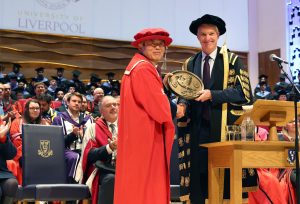04 Mar 2021
In 1958, while a chemistry student at Oxford University, M. J. L. Tillotson published a paper about EDTA (Ethylenediaminetetraacetic acid) in the Journal of the Chemical Society.

(Jonathan Tillotson's Father M. J. L. Tillotson)
More than six decades later, this experiment was reproduced in a lab at the Xi’an Jiaotong-Liverpool University Department of Chemistry, by his son Jonathan Tillotson, a Senior Language Lecturer at the School of Languages.
“My dad originally studied chemistry, but he didn’t continue with it in order to manage the family business. He never really spoke about chemistry, but one day I came across his paper.
“I didn’t understand the science, so I sent it to my colleague, Dr Graham Dawson, who works at the Department of Chemistry. He said that it was similar to an experiment they conduct with Year Two students. We came up with the idea of letting me try a version of my dad’s experiment.”
Dr Dawson explained the experimental principles and applications to Tillotson, which helped him better understand and enjoy his father’s love of chemistry. “What Jonathan’s dad researched is still highly related to what our whole department is doing today,” Dr Dawson says.


(From Left to Right: Dr Graham Dawson, Jonathan Tillotson, and Dr Lifeng Ding)
The experiment, called complexometric titrations with EDTA, is about using EDTA to determine the amount of calcium within a solution. Due to the reaction between the indicator liquid and EDTA, the color will change from red to blue.


“Understanding bonding, ionization, and structure are still of fundamental importance in chemistry,” Graham added.
Dr Lifeng Ding, also from the Department of Chemistry, agrees:
“Classical chemistry methods always play an important role in both the teaching and research of chemistry. At the XJTLU Chemistry Department, not only do we exercise modern techniques in chemistry, but we also look back into classical chemistry methods which stimulate inspiration and critical thinking skills for our students.”
By Xinyi Liu
Edited by Patricia Pieterse
04 Mar 2021







